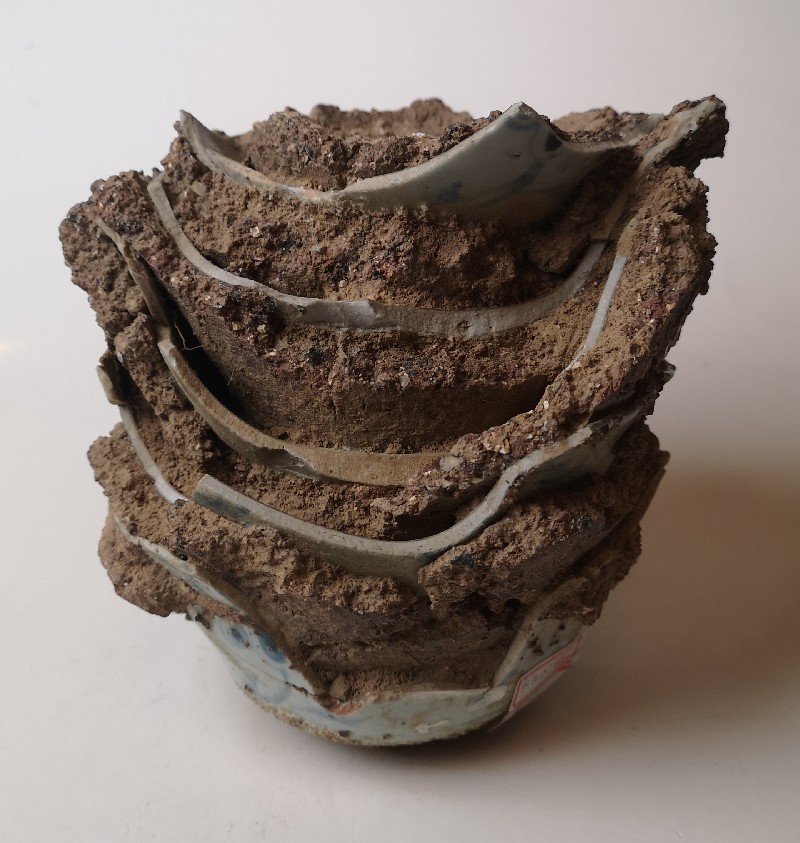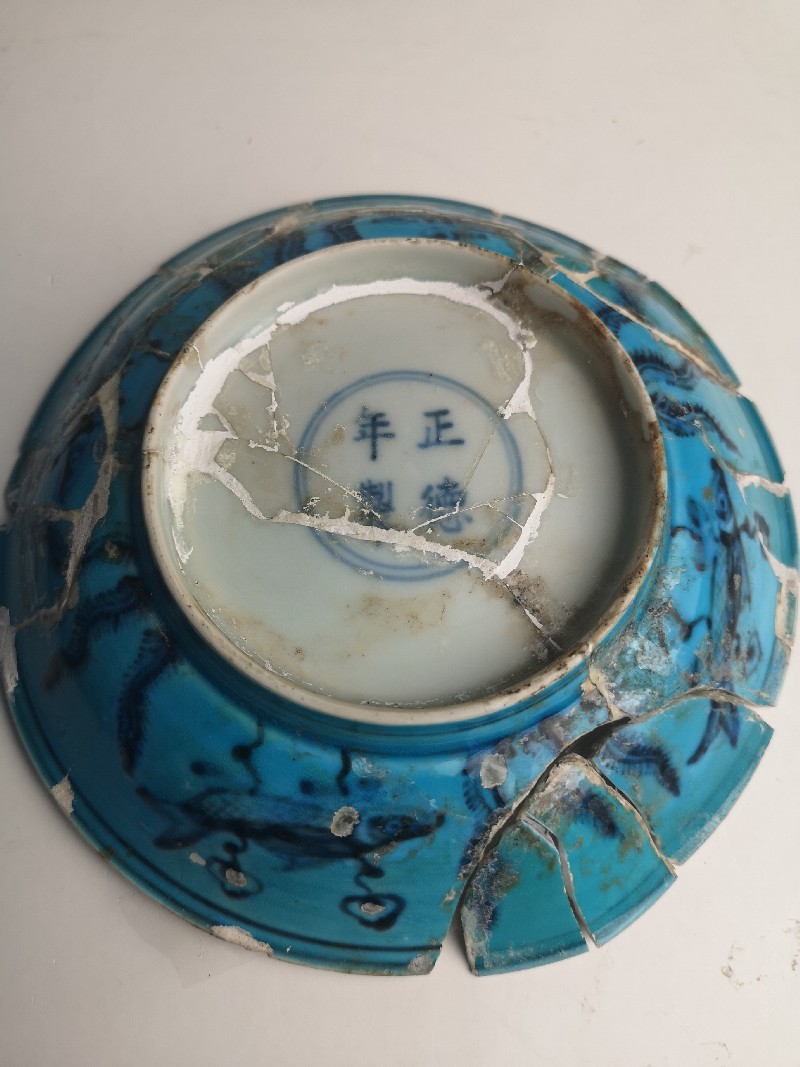
A set of collapsed Ming dynasty Jingdezhen blue-and-white bowls and saggars, fused together by glaze and heat, illustrates how multiple vessels could deform into a single mass during firing. Lumps of this kind are regularly found used as building material in Jingdezhen. Porcelain pieces does not need to be this destroyed to be called a waster. Anything that have been rendered deformed and ruined so much that is was discarded was considered a kiln waster.

Dish with Lotuses and Fish. Jingdezhen blue-and-white ware under turquoise glaze, with underglaze cobalt decoration of fish among lotus plants. The base bears a six-character Zhengde nian zhi (Made in the Zhengde period) mark. This dish was possibly made at the Imperial Kiln and subsequently smashed and discarded due to a small imperfection. It has been excavated and later restored, possibly using fragments from several dishes of the same type.
"Kiln waster" is a Chinese porcelain manufacturing term. It is any piece of ceramic or porcelain that has been damaged, deformed, or otherwise ruined during firing, making it unsuitable for sale or use. Such pieces were discarded at the kiln site, often in large heaps or pits near the production area. Sometimes the entire kiln collapsed causing massive damage to its content.
Typical causes of wastage include warping, cracking, glaze runs, collapse of stacked wares, or chemical and temperature imbalances in the kiln atmosphere. Sometimes entire sets of bowls, dishes, and their supporting saggars collapsed together, fusing into solid masses of porcelain and kiln debris.
Wasters are common finds at kiln excavation sites such as Jingdezhen, where they provide invaluable archaeological evidence of production methods, kiln technology, and stylistic development. Even though the term might suggest complete destruction, a porcelain piece does not have to be shattered to be classified as a waster. Any object that failed to meet quality standards and was discarded after firing is considered a kiln waster.
A vessel or fragment which has been damaged during firing or later in the process of manufacture, and has been abandoned as waste. Restored "wasters" occurs as a type of hard to detect fraud pieces on the antiques market.
A